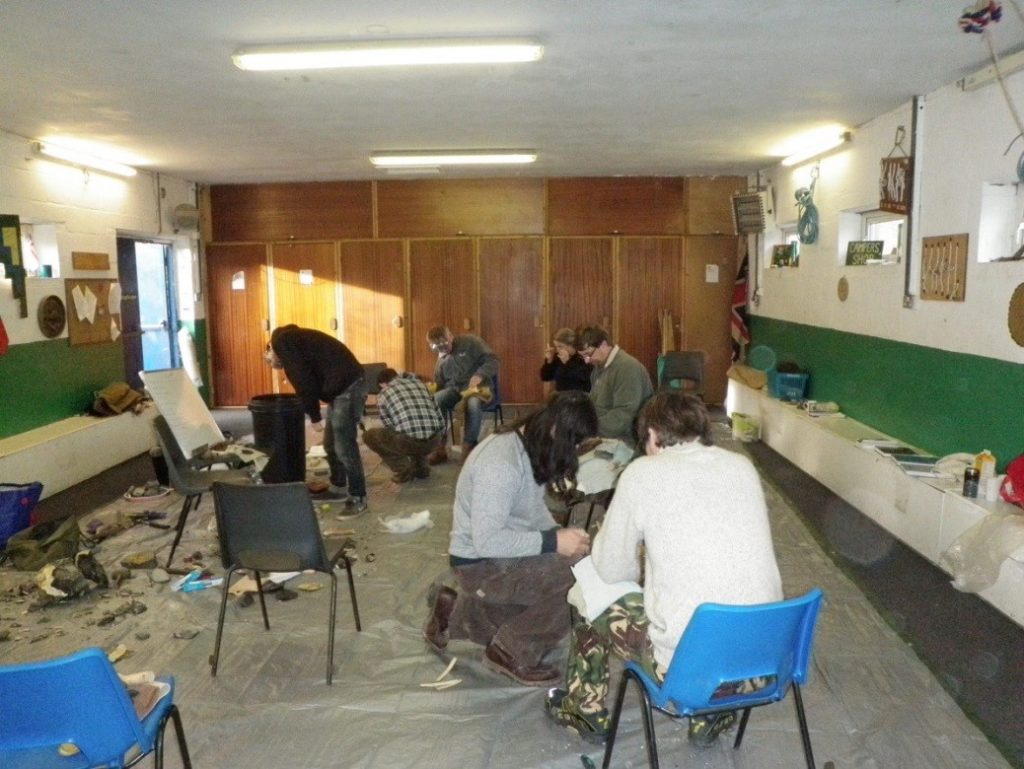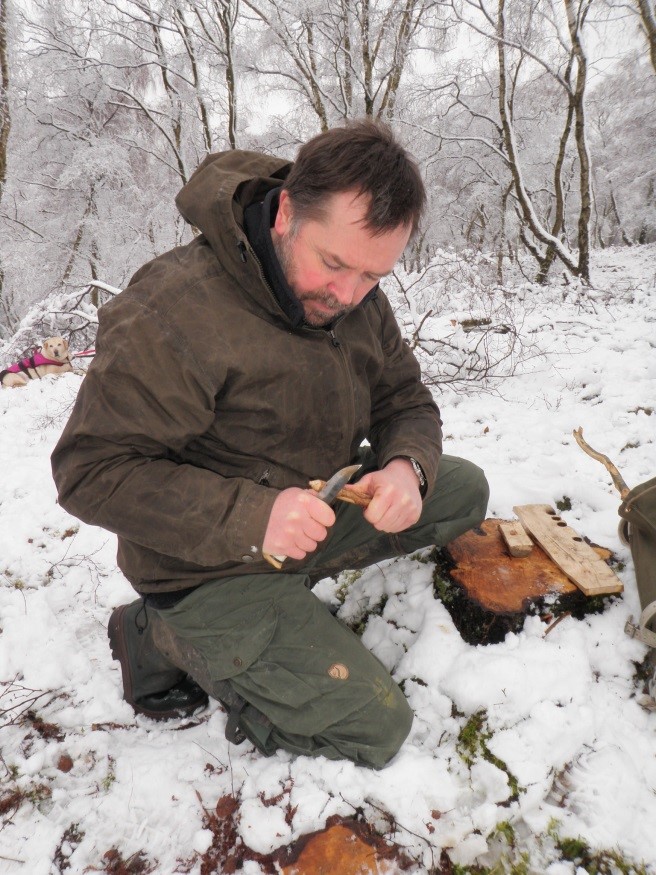I have been teaching primitive technologies and ancient skills for over twenty years; working with schools, the general public, Native Awareness, and the Universities of Chester, Edinburgh and York. Throughout this time, the feedback from participants has always been extremely positive, they enjoy learning skills that would otherwise be lost to society, they enjoy working through the same problems as our ancestors. They enjoy the fact that something, e.g. a stone bead that may have just been recovered from the ground, is now being created by them using primitive technology, placing the artefact in a ‘creation’ context.
A key part of my PhD (Mesolithic fishing and shellfish procurement strategies on the west coast of Scotland) was the involvement of students. I taught them to make and use their own primitive fishing gear. A clear distinction developed between the experiences gained through individual activities and group activities. Students collaborated in small groups throughout the manufacture of portable traps, and, though working individually when making lines and hooks, sat together and were able to share their feelings and experiences. Through this the students gained an important social interaction and interestingly in some cases developed their own vocabulary as a way of communicating a new task.

Of course this experimental work can only benefit archaeologists if it is evaluated. Aspects of procurement, manufacture, the activity itself, evidence of learning and understanding, together with social interactions, are all important in unravelling how our ancestors might have lived.
This use of experimental archaeology to give an active living context to archaeological artefacts is an important educational bridge, linking often speculative theories with actual physical experience and increasing our understanding of the past.
The use of primitive technologies and ancient skills as an educational tool found a passionate advocate in Cutts (2004, 45) who believed that such skills beckoned “us to reach across the eons to touch the core of humanity”. Not only do they open up the past to us providing an insight into the lifeway’s of our ancestors, Cutts believed such skills could also engender a genuine respect for our environment and our place within it. Important considerations when conducting a primitive skills workshop are;
1) Can the task be completed in the time allocated?
2) What is the skill level of the participants?
3) What are the facilities?
4) What resources are required?
5) What are the health and safety implications?
Remember, participants will want to go away enthused and inspired, not confused and frustrated.

Finally, ensure that the site is suitable for your activity. I can well recall a workshop at a University where I was teaching primitive fire making. Moved from a classroom which had a sprinkler system to a more suitable outdoor location, I discovered (once we had lit the fires), that we were directly outside the main air intake for the entire building. The students with me were tremendously enthused by their newly acquired skills, however some of the staff in the building were less so.
Cutts, R., 2004. Public Education and the Paleokit. Bulletin of Primitive Technology 28: 45.
Dr Peter Groom is Course Manager of the Environmental Archaeology and Primitive Skills Programme at Reaseheath College, Nantwich, Cheshire, and a director of the Mesolithic Resource Group http://mesolithic.org.uk/
